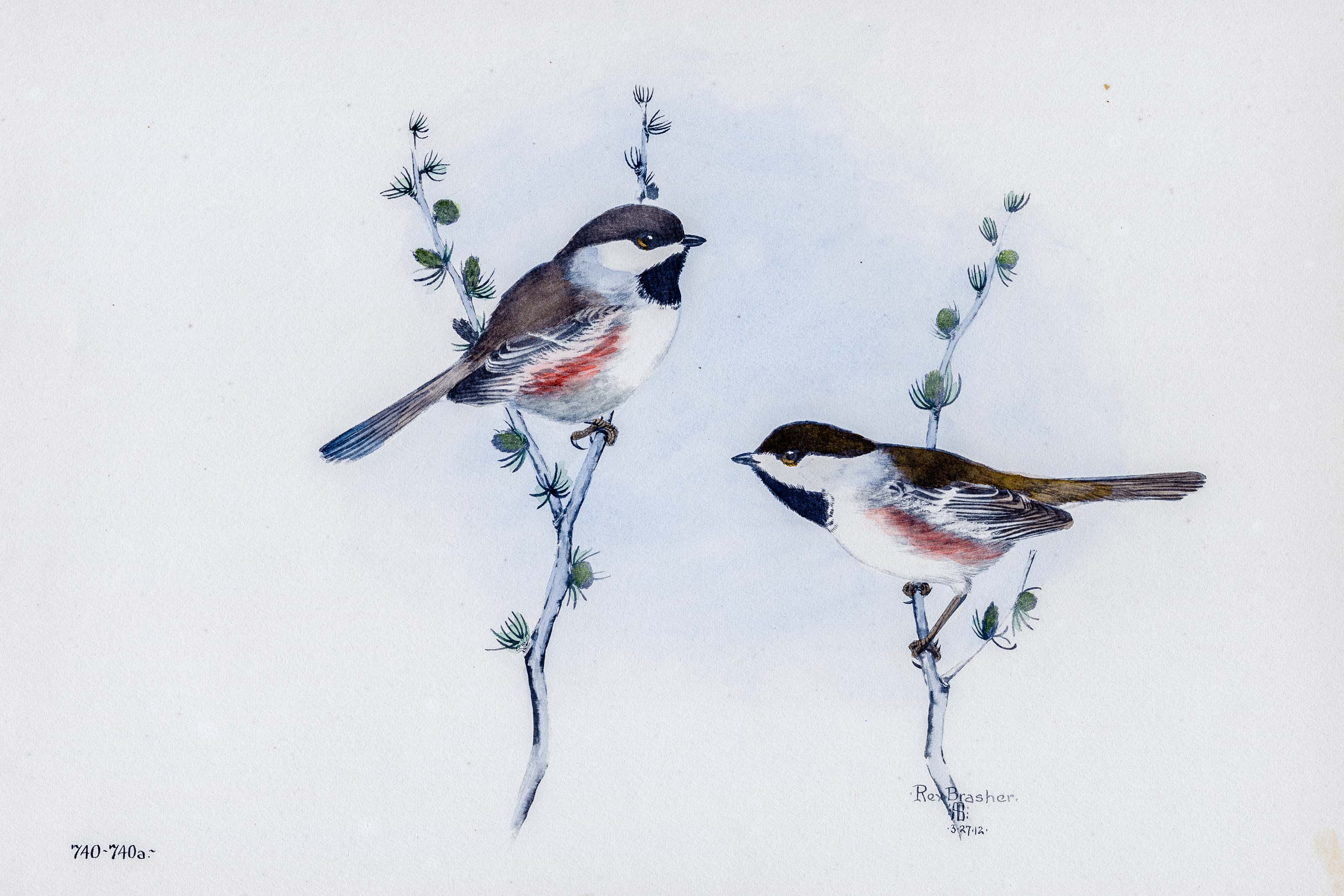
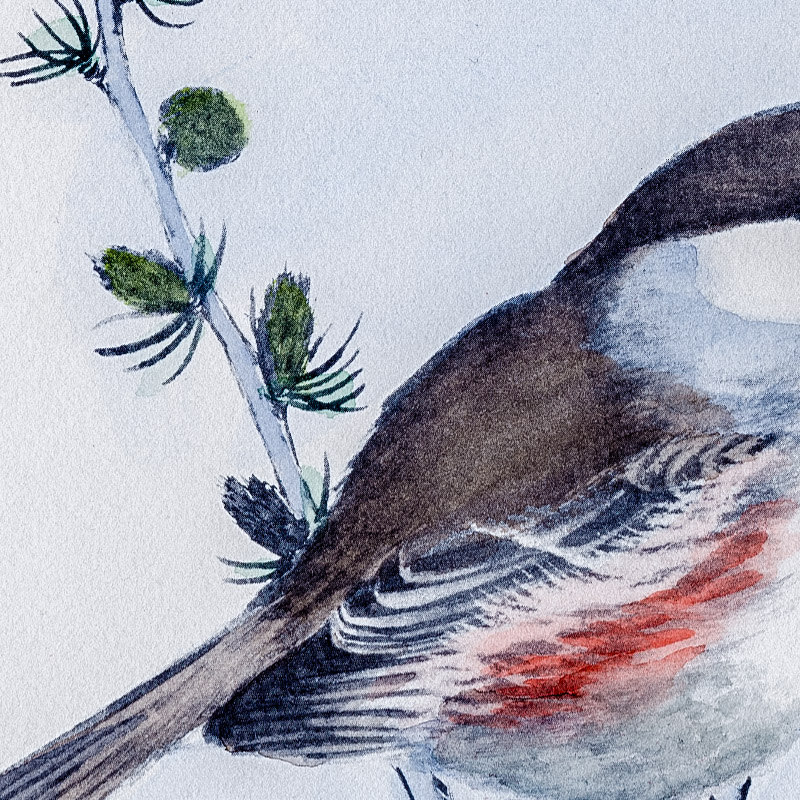
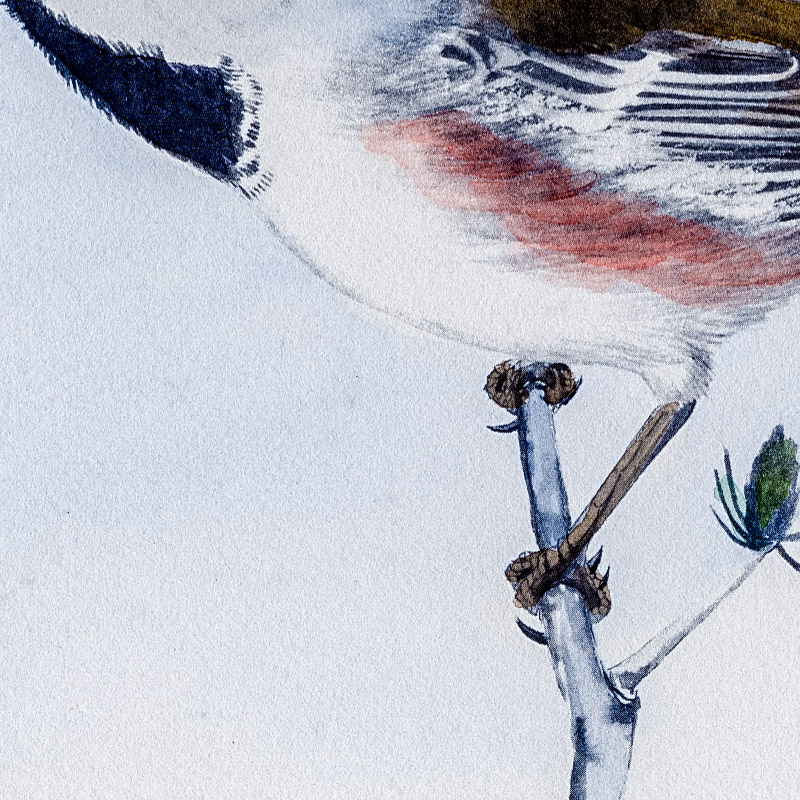
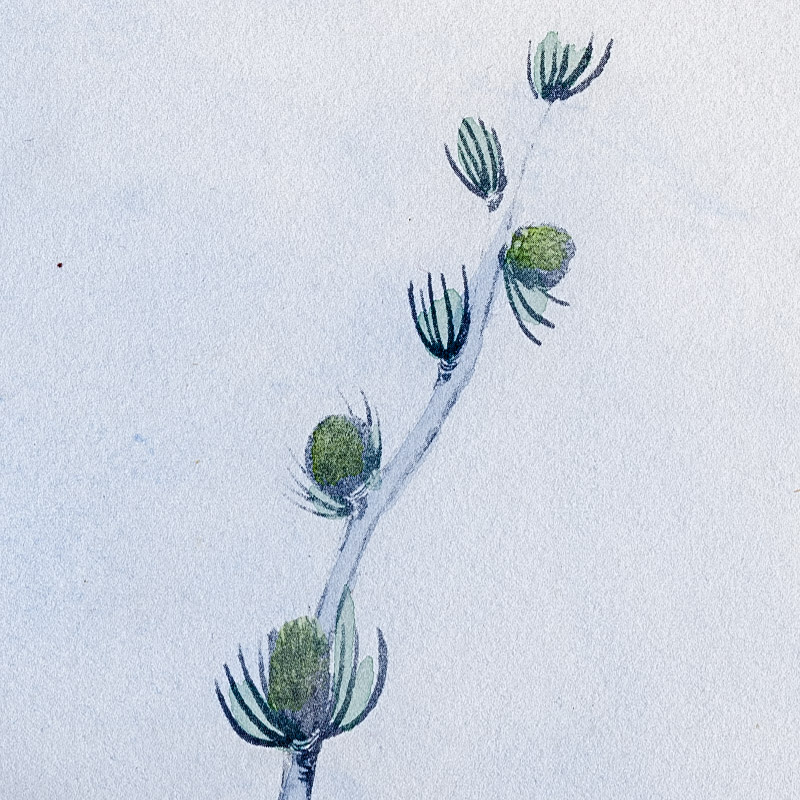
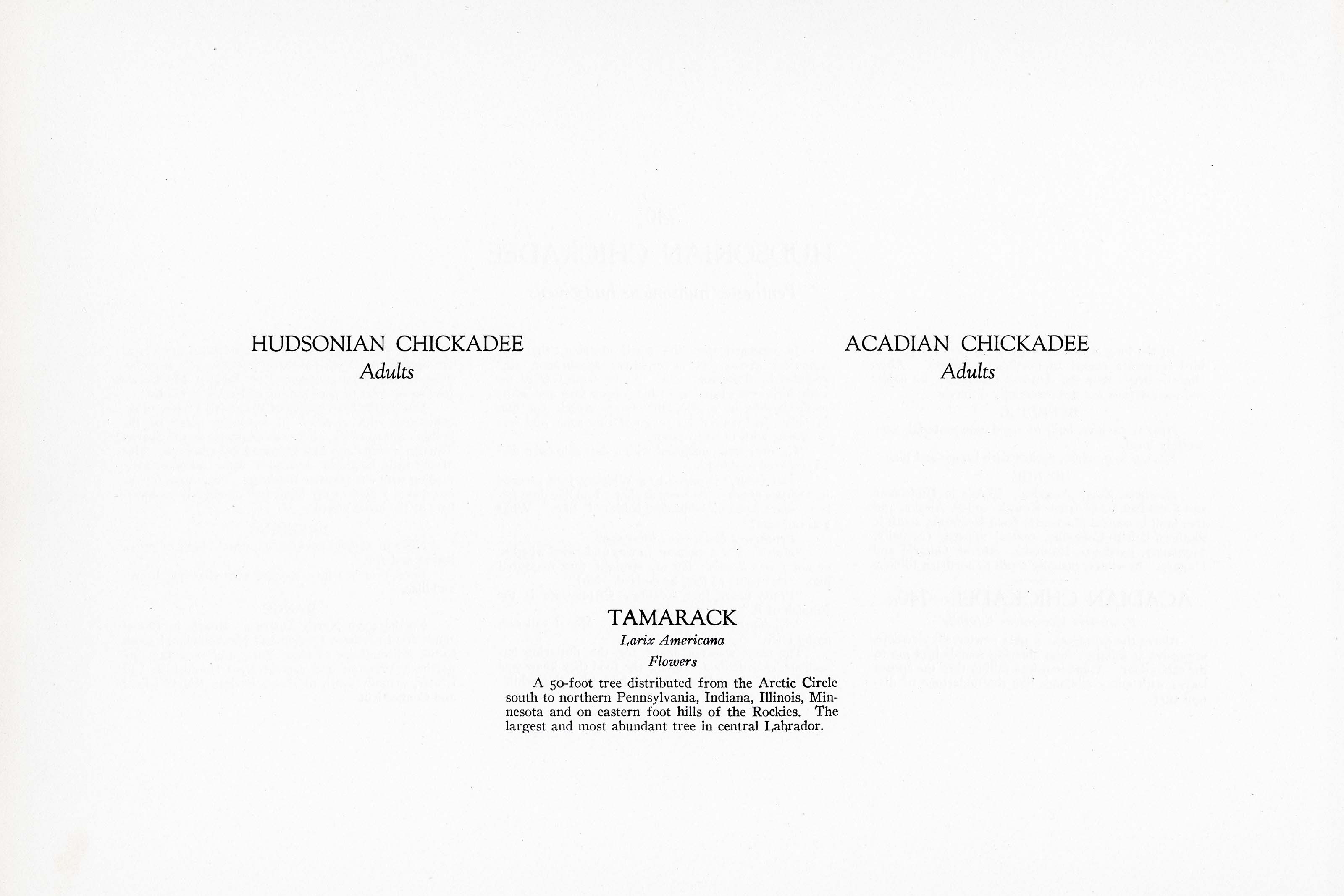
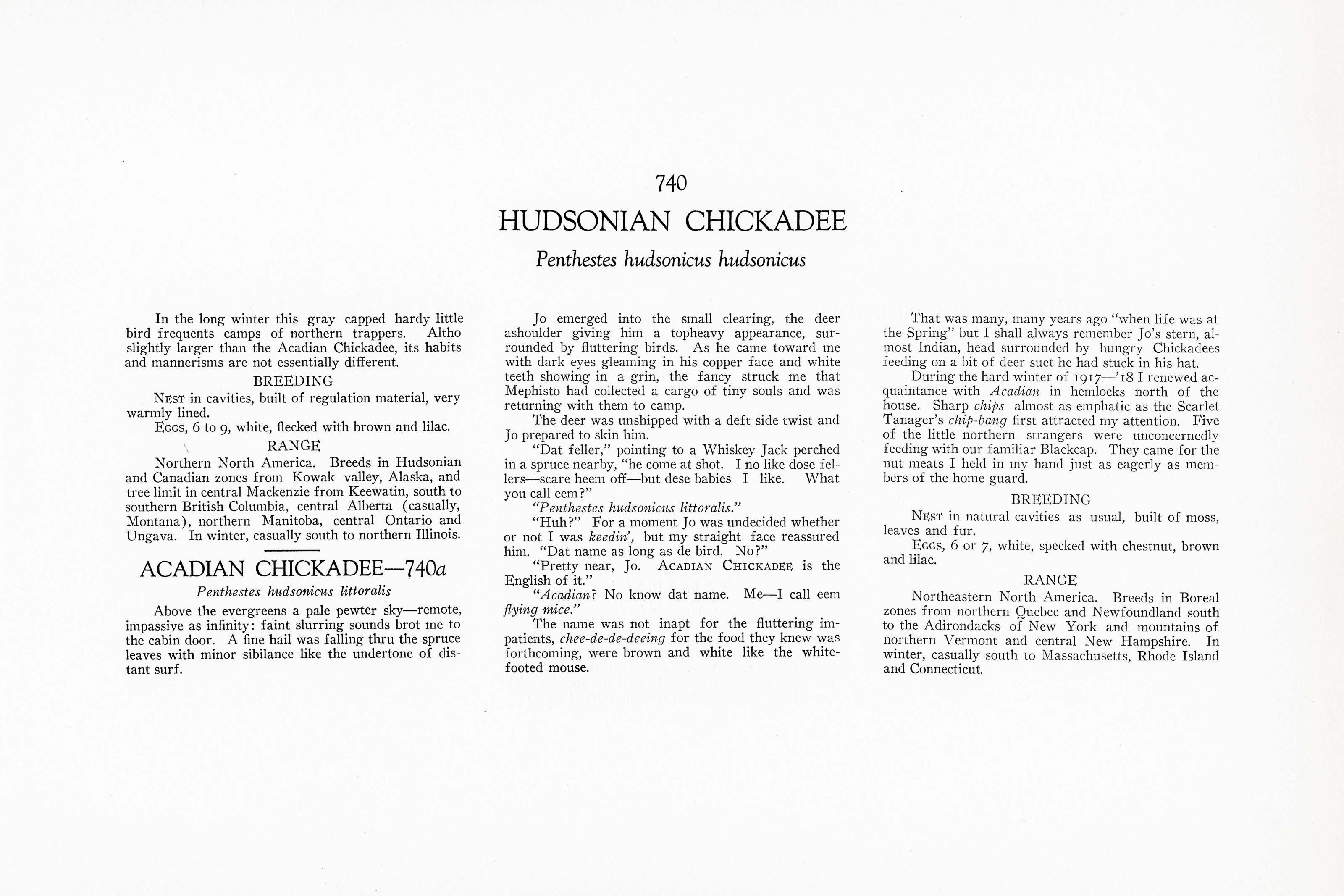

1912
1929
12
740-740a
A team of dedicated board members, volunteers, and student interns has published every page in Volume 9. This volume includes 360 images of paintings and lyrical descriptions of birds, now available online for everyone to enjoy anywhere in the world. This is a monumental task. Each volume requires approximately 400 hours to photograph, edit, transcribe, catalog, and publish online. We need your support to complete this work.
If you're tech-savvy, have a good eye, are meticulous with details, and love structured data, please consider volunteering by emailing us at hello@rexbrasher.org.
We encourage all bird lovers and supporters to consider a monetary donation to support our mission to make Rex's work available for everyone. You can provide a one-time or recurring donation online.
In the long winter this gray capped hardy little bird frequents camps of northern trappers. Altho slightly larger than the Acadian Chickadee, its habits and mannerisms are not essentially different.
NEST in cavities, built of regulation material, very warmly lined.
EGGS, 6 to 9, white, flecked with brown and lilac.
Northern North America. Breeds in Hudsonian and Canadian zones from Kowak valley, Alaska, and tree limit in central Mackenzie from Keewatin, south to southern British Columbia, central Alberta (casually, Montana), northern Manitoba, central Ontario and Ungava. In winter, casually south to northern Illinois.
Above the evergreens a pale pewter sky — remote, impassive as infinity: faint slurring sounds brot me to the cabin door. A fine hail was falling thru the spruce leaves with minor sibilance like the undertone of distant surf.
Jo emerged into the small clearing, the deer ashoulder giving him a topheavy appearance, surrounded by fluttering birds. As he came toward me with dark eyes gleaming in his copper face and white teeth showing in a grin, the fancy struck me that Mephisto had collected a cargo of tiny souls and was returning with them to camp.
The deer was unshipped with a deft side twist and Jo prepared to skin him.
"Dat feller," pointing to a Whiskey Jack perched in a spruce nearby, "he come at shot. I no like dose fellers — scare heem off — but dese babies I like. What you call eem?"
"Penthestes hudsonicus littoralis."
"Huh?" For a moment Jo was undecided whether or not I was keedin', but my straight face reassured him. "Dat name as long as de bird. No?"
"Pretty near, Jo. ACADIAN CHICKADEE is the English of it."
"Acadian? No know dat name. Me — I call eem flying mice."
The name was not inapt for the fluttering impatients, chee-de-de-deeing for the food they knew was forthcoming, were brown and white like the whitefooted mouse.
That was many, many years ago "when life was at the Spring" but I shall always remember Jo's stern, almost Indian, head surrounded by hungry Chickadees feeding on a bit of deer suet he had stuck in his hat.
During the hard winter of 1917 — '18 I renewed acquaintance with Acadian in hemlocks north of the house. Sharp chips almost as emphatic as the Scarlet Tanager's chip-bang first attracted my attention. Five of the little northern strangers were unconcernedly feeding with our familiar Blackcap. They came for the nut meats I held in my hand just as eagerly as members of the home guard.
NEST in natural cavities as usual, built of moss, leaves and fur.
EGGS, 6 or 7, white, specked with chestnut, brown and lilac.
Northeastern North America. Breeds in Boreal zones from northern Quebec and Newfoundland south to the Adirondacks of New York and mountains of northern Vermont and central New Hampshire. In winter, casually south to Massachusetts, Rhode Island and Connecticut.
A 50-foot tree distributed from the Arctic Circle south to northern Pennsylvania, Indiana, Illinois, Minnesota and on eastern foot hills of the Rockies. The largest and most abundant tree in central Labrador.